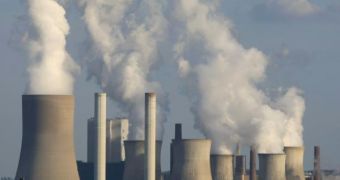This September 20, the US Environmental Protection Agency (EPA) announced that, as part of President Obama's Climate Action Plan, it was proposing new and quite strict standards for power plants that would from now on be built on the country's territory.
Besides, EPA said that it was looking into the possibility of greening up the working agenda of power plants already up and running in the US.
The Agency maintains that these efforts to make the country's energy sector more environmentally friendly need be seen as an attempt to mitigate climate change. What's more, EPA expects that public health will also have a lot to gain.
“The U.S. Environmental Protection Agency (EPA) today proposed Clean Air Act standards to cut carbon pollution from new power plants in order to combat climate change and improve public health.”
“In addition, EPA has initiated broad-based outreach and direct engagement with state, tribal, and local governments, industry and labor leaders, non-profits, and others to establish carbon pollution standards for existing power plants and build on state efforts to move toward a cleaner power sector,” the EPA press release reads.
Under the new standards, new large natural gas-fired turbines would not be allowed to emit more than 1,000 pounds of CO2 per megawatt-hour. Small ones would have to limit their carbon emissions to 1,100 pounds per megawatt-hour.
EPA also proposes that the CO2 emissions limit for new coal-fired plants be one of 1,100 pounds per-megawatt-hour.
“These proposed standards will ensure that new power plants are built with available clean technology to limit carbon pollution,” EPA argues.
Once the proposed standards are published in the Federal Register, the public has 60 days to comment on them. By the looks of it, the Agency will also organize a public hearing on the topic.
Commenting on the importance of implementing these new standards for power plants set to be built across the US in the years to come, EPA Administrator Gina McCarthy stated as follows:
“Climate change is one of the most significant public health challenges of our time. By taking commonsense action to limit carbon pollution from new power plants, we can slow the effects of climate change and fulfill our obligation to ensure a safe and healthy environment for our children.”
Furthermore, “These standards will also spark the innovation we need to build the next generation of power plants, helping grow a more sustainable clean energy economy.”

 14 DAY TRIAL //
14 DAY TRIAL //